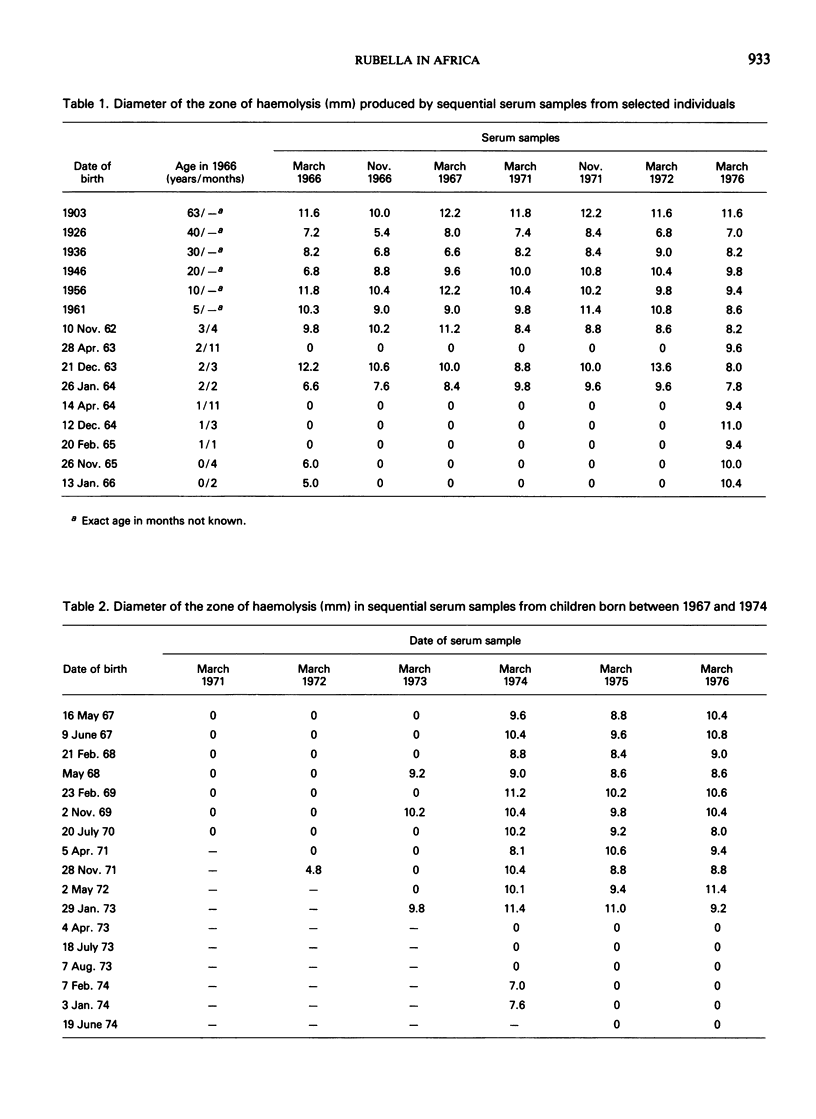Abstract
The single-radial-haemolysis test for antibody to rubella virus provides a simple rapid method for carrying out large serological surveys. The availability of a collection of sequential serum samples from inhabitants of two Gambian villages, Manduar and Keneba, made it possible to determine the pattern of rubella epidemics in these communities between 1966 and 1976. The serological findings indicated that an epidemic had occurred approximately two years before the commencement of the study. There was no further evidence of rubella infection until approximately 1973 when a large-scale epidemic occurred. Although the communities were monitored throughout the period of study there was no clinical evidence of infection and no cases of congenital rubella syndrome.
Full text
PDF




Selected References
These references are in PubMed. This may not be the complete list of references from this article.
- Anderson N., Mufson M. A. Viral antibodies among the Turkana people of Northern Kenya. Trop Geogr Med. 1972 Jun;24(2):168–177. [PubMed] [Google Scholar]
- Bracken P. M., Stanfield J. P. Rubella antibodies in Uganda. East Afr Med J. 1971 Apr;48(4):176–181. [PubMed] [Google Scholar]
- Skaug K., Orstavik I., Ulstrup J. C. Application of the passive haemolysis test for the determination of rubella virus antibodies. Acta Pathol Microbiol Scand B. 1975 Aug;83(4):367–372. doi: 10.1111/j.1699-0463.1975.tb00114.x. [DOI] [PubMed] [Google Scholar]


